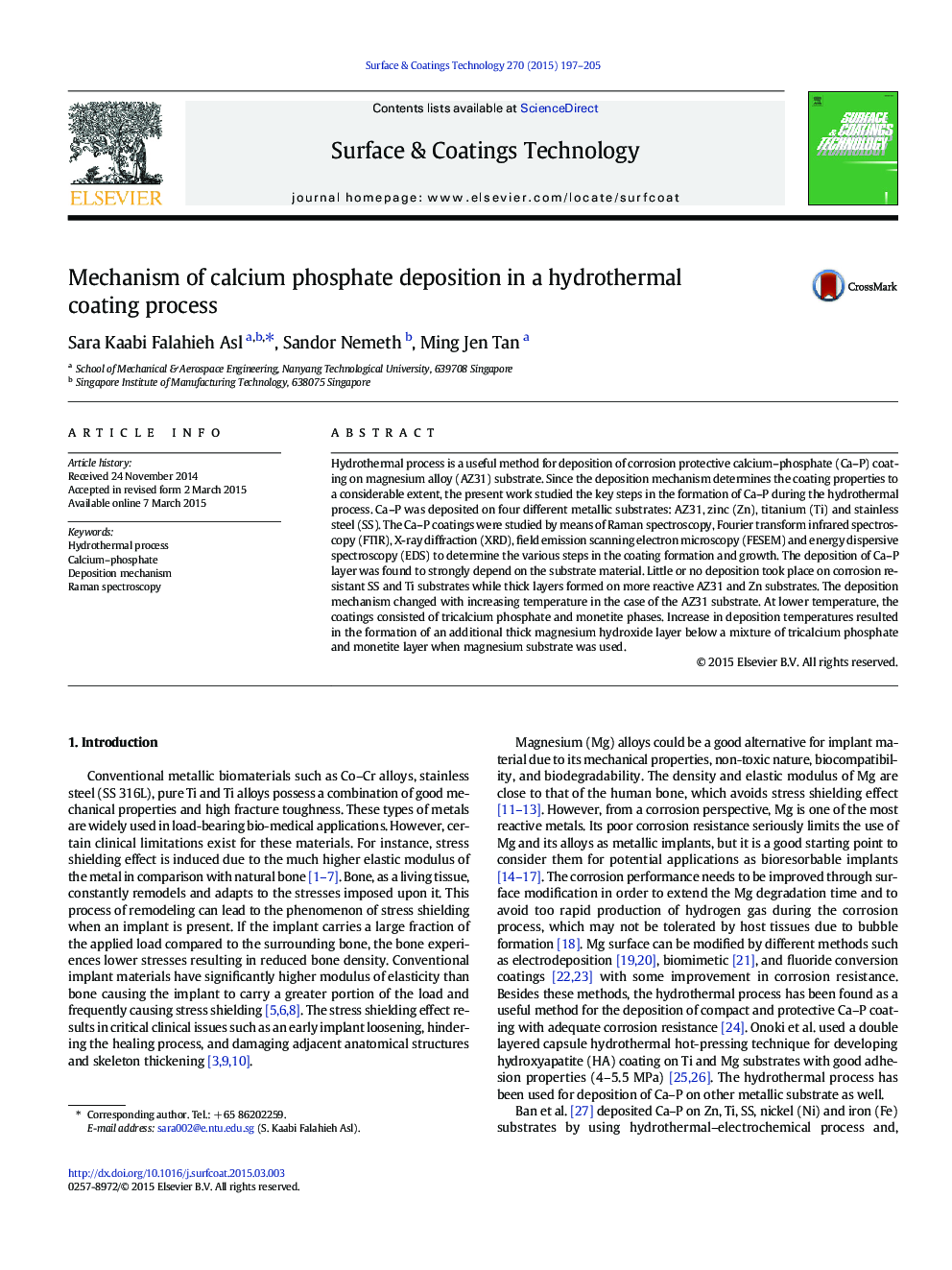| Article ID | Journal | Published Year | Pages | File Type |
|---|---|---|---|---|
| 8026687 | Surface and Coatings Technology | 2015 | 9 Pages |
Abstract
Hydrothermal process is a useful method for deposition of corrosion protective calcium-phosphate (Ca-P) coating on magnesium alloy (AZ31) substrate. Since the deposition mechanism determines the coating properties to a considerable extent, the present work studied the key steps in the formation of Ca-P during the hydrothermal process. Ca-P was deposited on four different metallic substrates: AZ31, zinc (Zn), titanium (Ti) and stainless steel (SS). The Ca-P coatings were studied by means of Raman spectroscopy, Fourier transform infrared spectroscopy (FTIR), X-ray diffraction (XRD), field emission scanning electron microscopy (FESEM) and energy dispersive spectroscopy (EDS) to determine the various steps in the coating formation and growth. The deposition of Ca-P layer was found to strongly depend on the substrate material. Little or no deposition took place on corrosion resistant SS and Ti substrates while thick layers formed on more reactive AZ31 and Zn substrates. The deposition mechanism changed with increasing temperature in the case of the AZ31 substrate. At lower temperature, the coatings consisted of tricalcium phosphate and monetite phases. Increase in deposition temperatures resulted in the formation of an additional thick magnesium hydroxide layer below a mixture of tricalcium phosphate and monetite layer when magnesium substrate was used.
Related Topics
Physical Sciences and Engineering
Materials Science
Nanotechnology
Authors
Sara Kaabi Falahieh Asl, Sandor Nemeth, Ming Jen Tan,
